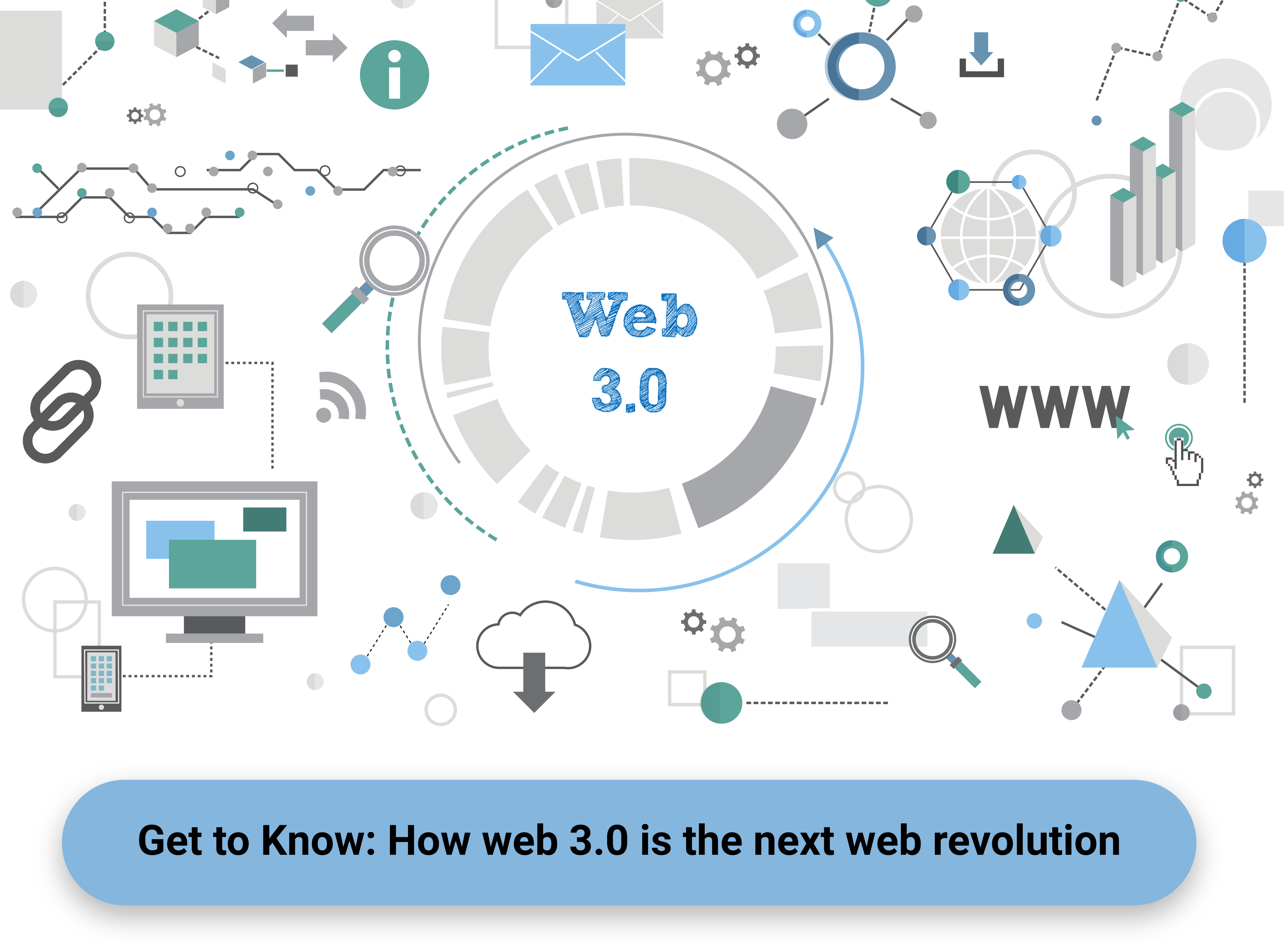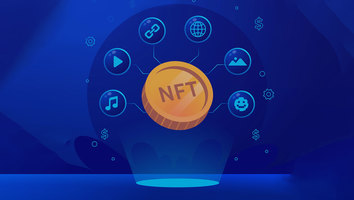Web 3.0 is the current buzzword sweeping the Internet world, following the success of the metaverse. Web 3.0, also known as the decentralized web, is the third version of the Internet, and it is a step forward from the existing Web 2.0 Internet.
Web 3.0 is by far the most recent Internet technology, combining machine learning, artificial intelligence, and blockchain to enable real-time human communication. The cherry on top is that web 3.0 will allow individuals to not only own their data but also to get reimbursed for their online time.
In addition, web3 will empower websites and applications to make better use of data and personalize information to specific customers.
As a result, the third generation of the Internet will be one in which you may have individualized interactions with machines and websites in the same way that you would with any other human.
Key Features of Web 3.0
The key features of web 3.0 are:
-
Transparency
It's 'open' in the notion that it was created using open-source software by an open and accessible community of developers in full view of the public.
-
Trustless
Users have the option to engage openly and privately without the risk of an intermediary, resulting in "trustless" data.
-
Permissionless
Without the necessity for approval from a controlling organization, everyone, including users and providers, can participate.
-
Omnipresent
Web 3.0 will allow us to access the Internet at any time and from any location. Web-connected gadgets will no longer be confined to computers and cell phones at some time in the future, as they were in web 2.0. Technology will enable the development of a plethora of new sorts of intelligent gadgets as a result of the Internet of Things (IoT).
What Is Web 3.0 and How Does It Work?
The goal of web 3.0 is to make Internet searches significantly faster, easier, and more efficient so that even complicated search words can be processed quickly.
A user must engage with the front end of a web 2.0 application, which communicates with the backend, which then communicates with the database. The complete code is stored on centralized servers and delivered to consumers via a web browser.
Web 3.0 lacks both centralized databases for application state storage and a centralized web server for backend processing. Instead, a blockchain can be used to create apps that run on a decentralized state machine and are maintained by anonymous nodes on the internet.
Layers of Web 3.0
Web 3.0 is propelled by three new layers of technological innovation, whereas web 2.0 was primarily driven by the advent of mobile, social, and cloud technologies.
- Edge Computing:
While web 2.0 modifies currently commoditized personal computer technology in data centres, web 3.0 is pushing the data centre out to the edge (i.e., edge computing) and perhaps right into our court.
Phones, tablets, appliances, sensors, and automobiles will produce and consume 160 times more data in 2025 than they did in 2010.
- Artificial Intelligence & Machine Learning
Artificial intelligence and machine learning algorithms have progressed to the point that they can now make useful, and sometimes life-saving, predictions and actions.
When constructed on top of growing decentralized data structures that provide today's tech titans access to a plethora of data, the possibilities go far beyond targeted advertising into areas like:
- precision materials
- medication creation
- climate modeling
Even though web 2.0 has similar capabilities, it is still mostly human-based.
- Decentralized Data Network
Decentralized data networks allow different data generators to sell or exchange their data without losing ownership, jeopardizing privacy, or relying on middlemen. As a corollary, in the emerging 'data economy,' decentralized data networks will have a vast list of data suppliers.
For instance, when you use your email and password to enter into an app, when you like a video, or when you ask Alexa a question, all of these behaviors are logged and analyzed by internet giants like Google and Facebook to better target their adverts.
- Blockchain
In layman's terms, blockchain exchange is a new layer of technology that sits on top of web 3.0. Blockchain, in particular, is the backbone of web3, as it redefines the data structures in the semantic web's backend.
The blockchain is a decentralized state machine that uses smart contracts to operate. These smart contracts specify an application's logic for web 3.0. As a result, anyone who wants to create a blockchain application must deploy their code on the shared state machine.
Benefits of Web 3.0
Here’s the list of the benefits of Web 3.0:
- Effortless Services
Users will be able to access data in any situation thanks to decentralized data storage. Users will receive several backups, which will help them even if the server fails.
Furthermore, no entity or government agency will be able to halt the operation of any services or websites. As a result, the chances of account suspension and distributed service denial will be lowered.
- Privacy and Control of Data
End-users will benefit the most from data encryption in terms of protecting their information from leakage.
In every case, the encryption will be unbreakable. It will make it impossible for major corporations like Google and Apple to manage or use people's personal information for their gain.
- Data Accessibility that is Open
The information will be available from any location and on any device. By allowing smartphones and other connected devices to access data on the computer if they are synchronized, the goal is to expand data collection and accessibility to people all over the world.
Web 3.0 will broaden the scope of engagement by allowing for frictionless payments, richer information flows, and secure data transfers. This will occur because web3 will allow us to interface with any machine without having to pay a fee to a middleman.
- Data Processing Improvements
Problem-solving and intensive knowledge-generating tasks benefit from Web 3.0. It makes use of artificial intelligence to extract useful information from a large amount of data.
Customers will also benefit from its capacity to estimate client demand and provide individualized customer care, both of which are essential for successful enterprises.
- Transparency
End-users will follow their data and inspect the code behind the platform irrespective of which blockchain platform they choose.
The majority of blockchain systems are developed by non-profits, which implies that they provide an open-source blockchain platform that allows for open design and development procedures. This will help consumers become less reliant on the platform's developer.
Final Thoughts
In today’s tech-dominating landscape, people would have maximum control over their data and they may allow organizations to use their data or not.
As a result, from tailored search results to cross-platform development tools and the use of 3D graphics, web 3.0 will speed up the honest and transparent use of user data. The internet will become more immersive and interactive in the near future.
W3Villa Technologies is a major IT and blockchain development company that specializes in interactive Web 3.0 applications that are the right blend of AI and web technology. We study podcasts, blogs, social networking sites, shared news, and other technology-based possibilities to interact online with friends, family, communities, and like-minded people through Web 3.0 development services.



